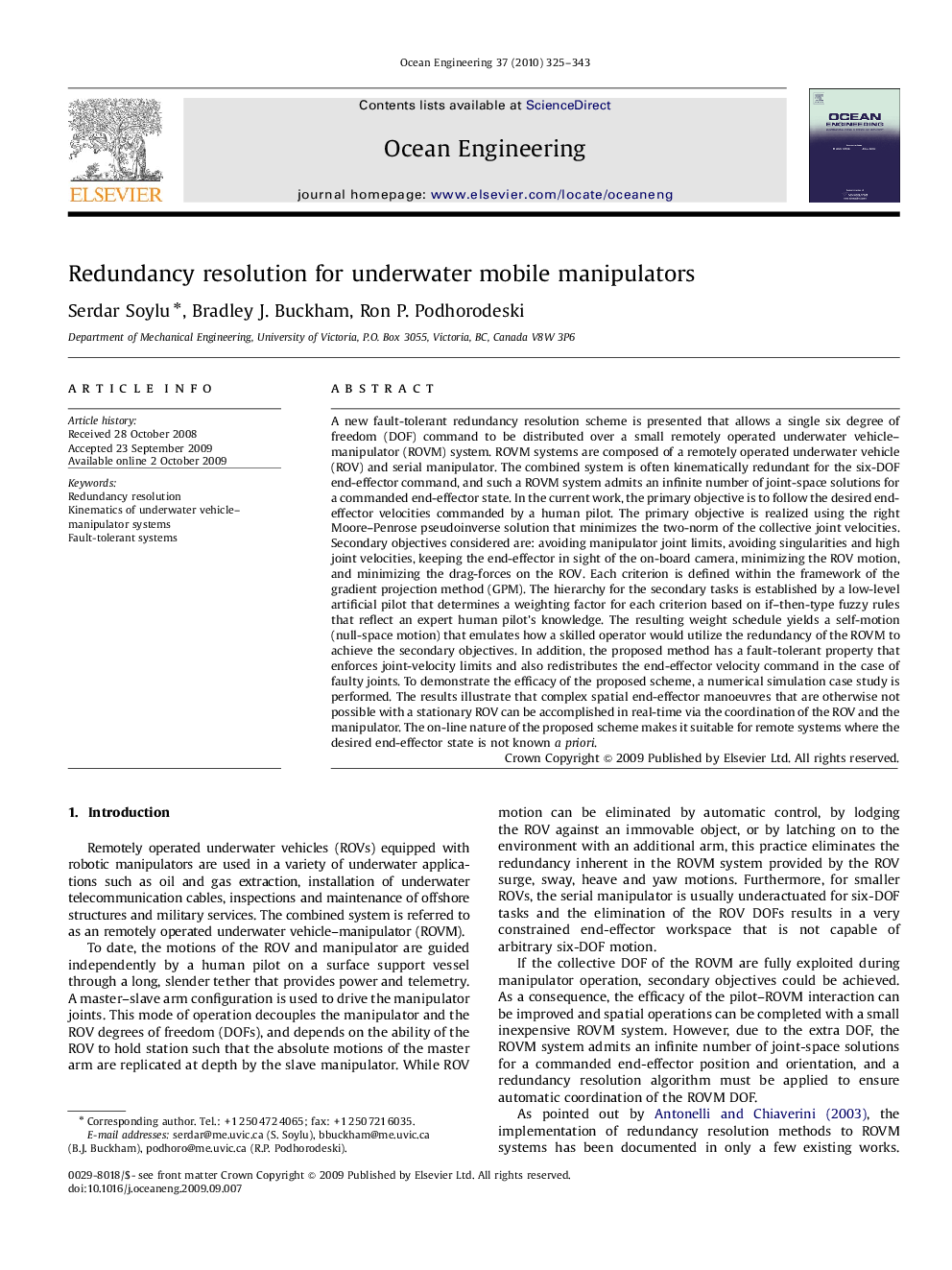| Article ID | Journal | Published Year | Pages | File Type |
|---|---|---|---|---|
| 1727123 | Ocean Engineering | 2010 | 19 Pages |
A new fault-tolerant redundancy resolution scheme is presented that allows a single six degree of freedom (DOF) command to be distributed over a small remotely operated underwater vehicle–manipulator (ROVM) system. ROVM systems are composed of a remotely operated underwater vehicle (ROV) and serial manipulator. The combined system is often kinematically redundant for the six-DOF end-effector command, and such a ROVM system admits an infinite number of joint-space solutions for a commanded end-effector state. In the current work, the primary objective is to follow the desired end-effector velocities commanded by a human pilot. The primary objective is realized using the right Moore–Penrose pseudoinverse solution that minimizes the two-norm of the collective joint velocities. Secondary objectives considered are: avoiding manipulator joint limits, avoiding singularities and high joint velocities, keeping the end-effector in sight of the on-board camera, minimizing the ROV motion, and minimizing the drag-forces on the ROV. Each criterion is defined within the framework of the gradient projection method (GPM). The hierarchy for the secondary tasks is established by a low-level artificial pilot that determines a weighting factor for each criterion based on if–then-type fuzzy rules that reflect an expert human pilot's knowledge. The resulting weight schedule yields a self-motion (null-space motion) that emulates how a skilled operator would utilize the redundancy of the ROVM to achieve the secondary objectives. In addition, the proposed method has a fault-tolerant property that enforces joint-velocity limits and also redistributes the end-effector velocity command in the case of faulty joints. To demonstrate the efficacy of the proposed scheme, a numerical simulation case study is performed. The results illustrate that complex spatial end-effector manoeuvres that are otherwise not possible with a stationary ROV can be accomplished in real-time via the coordination of the ROV and the manipulator. The on-line nature of the proposed scheme makes it suitable for remote systems where the desired end-effector state is not known a priori.
